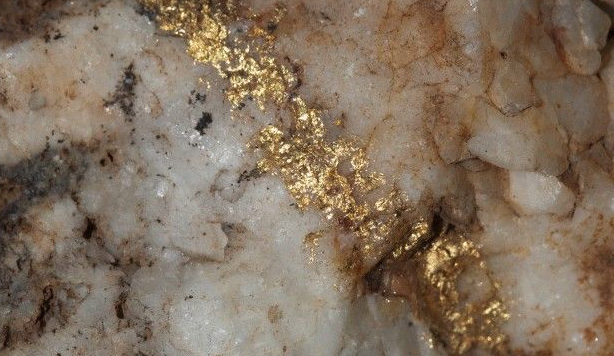Saturday, March 26 2022
Gold is gold, so there isn’t necessarily a better type of gold, however, mining for lode gold has many more challenges than mining for placer gold. The formation of gold generally starts as a vein in rock. This is referred to as “lode gold” and is formed when molten rock in the earth’s crust heats groundwater under great pressure. In fractured bedrock with appropriate rock chemistry, super-heated water (hydrothermal) at approximately 400-700 degrees Fahrenheit dissolves certain elements a Placer gold is the gold that most prospectors are more familiar with. Placer gold isn’t really any different than lode gold. It is simply a concentration of gold that is created over time as it erodes from hard rock veins. When exposed at the surface, a mineralized deposit will break down and erode due to reactions with oxygen, water and wind, coupled with temperature fluctuations. Since gold is very dense, it will move downhill much slower than the surrounding sediment. It tends to become concentrated on or near the surface of the lode, forming a “residual placer” close to the original bedrock exposure. Gold found downhill from the immediate outcrop above the nearest watercourse is called an “eluvial placer.” Once it reaches the nearest waterway and is transported by flowing water, the gold now forms an “alluvial placer.” The origin of the dust, flakes and nuggets found by panning and sluicing is usually from a vein up on a nearby mountain. An ore body is a mineral deposit that can be mined, processed and sold at a profit. All ore bodies are deposits. Few deposits are actual ore bodies. Valuable gold deposits in placers are referred to as “pay streaks” instead of ore bodies. Over time, eluvial and alluvial placers can become covered with sediment. When buried long enough and deep enough, these deposits will turn into “fossil placers.” Sometimes the fossil placers are re-cemented into sandstone or conglomerate rock and then must be mined using hard rock techniques. Hard rock ores have mostly fine to micro-fine gold in solid rock; placers contain fine to coarse gold particles in a softer bulk material or matrix. That makes placers much easier to mine and process. Moving soft soil or river gravel is obviously much easier than breaking rock. For small scale miners, though, a rock crusher can pulverize 2 or 3 inch sized rocks into powder in no time! But for the average prospector, panning and sluicing will be more fun and more profitable, and as time goes on, you may wish to upgrade your mining efforts with a highbanker or power sluice, dredge or trommel. Good luck! |
|
Nugget of News Blog |






 nd molecules from cubic miles of crust and transports them in a circulation loop. When this hydrothermal solution cools or chemically reacts with local rocks, the elements and molecules will come out of the solution and solidify (precipitate), forming ore deposits. The hydrothermal solution will begin precipitating on the sides of the opening and slowly fill the entire crack over time. This is how gold veins can form. These geologic processes take place over millions of years, and can happen many times over many years in the same location. Since the gold is locked up in rock, it is usually pretty hard to get to— usually requiring specialized mining techniques to mine and extract. Lode mining takes a lot more equipment and generally a lot more expense and is usually undertaken by large commercial operations instead of the average prospector.
nd molecules from cubic miles of crust and transports them in a circulation loop. When this hydrothermal solution cools or chemically reacts with local rocks, the elements and molecules will come out of the solution and solidify (precipitate), forming ore deposits. The hydrothermal solution will begin precipitating on the sides of the opening and slowly fill the entire crack over time. This is how gold veins can form. These geologic processes take place over millions of years, and can happen many times over many years in the same location. Since the gold is locked up in rock, it is usually pretty hard to get to— usually requiring specialized mining techniques to mine and extract. Lode mining takes a lot more equipment and generally a lot more expense and is usually undertaken by large commercial operations instead of the average prospector.